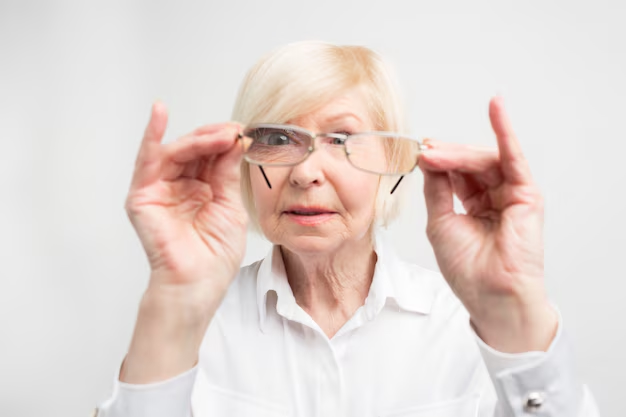Can Parkinson's Disease Affect Vision? Understanding the Connection
Parkinson's disease, a well-known neurodegenerative disorder, is primarily associated with motor symptoms like tremors, stiffness, and bradykinesia (slowed movement). However, many people wonder about its potential impact on vision, including the possibility of causing blindness. While Parkinson's disease mainly targets the nervous system, its effects can ripple through other bodily functions, raising questions about the direct and indirect effects on sight. Let’s delve into this intriguing topic to unravel the complexities of Parkinson's disease and its implications for vision.
The Basics of Parkinson's Disease: More Than Just Movement
Parkinson's disease is characterized by the loss of dopamine-producing neurons in the brain, particularly in an area called the substantia nigra. This loss leads to the hallmark motor symptoms most often associated with the condition. Yet, Parkinson's disease is more than just a movement disorder. It encompasses a range of non-motor symptoms that can significantly affect quality of life.
Non-motor Symptoms: A Broader Impact
In addition to motor symptoms, Parkinson's disease can lead to:
- Cognitive Impairments: Challenges with memory, attention, and problem-solving.
- Mood Disorders: Increased risk of depression and anxiety.
- Autonomic Dysfunction: Issues like constipation, blood pressure changes, and sweating abnormalities.
- Sensory Symptoms: Including disturbances in smell and, importantly, vision.
Given the complexity of Parkinson's disease and its wide-ranging effects, it's essential to understand how its mechanisms might indirectly influence eye health.
The Eye-Brain Connection: A Closer Look
Vision involves a complex interaction between the eyes and the brain. The brain processes visual information sent from the eyes through the optic nerve. While Parkinson's does not directly damage the eyes, its impact on the brain can indirectly affect the visual pathways.
Visual Alterations in Parkinson's Disease
Research indicates that individuals with Parkinson's may experience various visual disturbances, such as:
- Reduced Visual Acuity: Difficulty with sharpness and detail.
- Contrast Sensitivity Loss: Challenges distinguishing objects from backgrounds.
- Color Discrimination Issues: Changes in perceiving different colors.
- Decreased Blinking and Dry Eyes: Causing discomfort and blurred vision.
These disturbances show that while Parkinson's disease may not directly cause blindness, it can certainly affect quality of vision.
Are the Eyes at Risk for Serious Damage?
Given the understanding of visual changes associated with Parkinson's, it is crucial to address whether these alterations could lead to severe vision impairment or blindness.
Indirect Causes of Visual Issues
Blindness in Parkinson’s disease, as a direct result of the condition, is not typical. However, indirect factors may contribute to significant visual issues:
- Medication Side Effects: Drugs used in Parkinson’s treatment can have ocular side effects, affecting vision.
- Aging: Older adults, who are more commonly affected by Parkinson's, may already be at risk for age-related eye diseases like cataracts and macular degeneration.
- Autonomic Dysregulation: May lead to changes in blood flow to the retina and optic nerve.
These factors underscore that managing Parkinson’s involves not just addressing motor functions but also being vigilant about eye health.
The Role of Neurology and Ophthalmology in Care
Given the intricate connection between neurological health and vision, comprehensive care for Parkinson's should involve collaboration between neurologists and ophthalmologists. This interdisciplinary approach allows for addressing both primary symptoms and potential eye-related consequences.
Regular Eye Examinations
Routine eye check-ups are vital for individuals with Parkinson's. These assessments help monitor visual function and detect abnormalities early, allowing for timely intervention. Moreover, discussing any changes in vision with healthcare providers can lead to adjustments in treatment plans to minimize adverse effects.
The Importance of Lifestyle Adjustments
Lifestyle changes can support overall health and potentially mitigate some aspects of visual decline associated with Parkinson's disease. Here are some practical steps that may help maintain visual function:
- Good Lighting: Ensures environments are well-lit to facilitate better vision.
- Color Contrasts: Use of contrasting colors in home settings to compensate for reduced contrast sensitivity.
- Eye Exercises: Promote regular use of eye movement to maintain flexibility and function.
- Hydration and Nutrition: Adequate hydration and a diet rich in eye-benefiting nutrients like Omega-3 fatty acids and vitamins can support eye health.
These strategies can be part of a holistic approach to managing Parkinson’s disease and its effects on vision.
Vision Support Tools: Enhancing Daily Life
For those experiencing significant visual challenges, assistive devices can prove invaluable. Consider these tools and technologies:
- Magnifying Aids: To help with reading and detailed tasks.
- Electronic Readers: Devices that display text in larger fonts.
- Voice-Activated Assistants: Can offer convenience and ease for accessing information.
Utilizing these resources can empower individuals with Parkinson's to maintain independence and enhance their quality of life.
Consolidating the Insights
Understanding the potential impact of Parkinson’s disease on vision involves considering its neurological roots, indirect visual symptoms, and the importance of integrated care and proactive management. While complete blindness from Parkinson's is unlikely, maintaining regular health check-ups, embracing supportive lifestyle changes, and harnessing assistive technologies can greatly enhance daily functioning and visual quality.
Key Takeaways for Navigating Parkinson’s and Vision Changes:
- 👀 Eye Check-ups: Regular eye examinations are crucial.
- 🧠 Neurological Care: Collaborate with healthcare providers for comprehensive management.
- 💡 Environment Adjustments: Ensure appropriate lighting and color contrasts in daily settings.
- 🥦 Nutritional Support: Prioritize a diet rich in nutrients beneficial for eye health.
- 📱 Assistive Tools: Consider using magnifiers, electronic readers, and voice assistants for everyday tasks.
By understanding and addressing these dynamics, individuals with Parkinson's and their caregivers can take informed steps to protect and optimize vision over time.

Related Articles
- Are There Environmental Causes Of Parkinsons
- Can Alcohol Cause Parkinson's
- Can Concussions Cause Parkinson's
- Can Females Get Parkinson Disease
- Can Head Trauma Cause Parkinson's
- Can Parkinson Disease Cause Dizziness
- Can Parkinson's Affect Eyesight
- Can Parkinson's Affect Memory
- Can Parkinson's Affect Speech
- Can Parkinson's Affect Vision